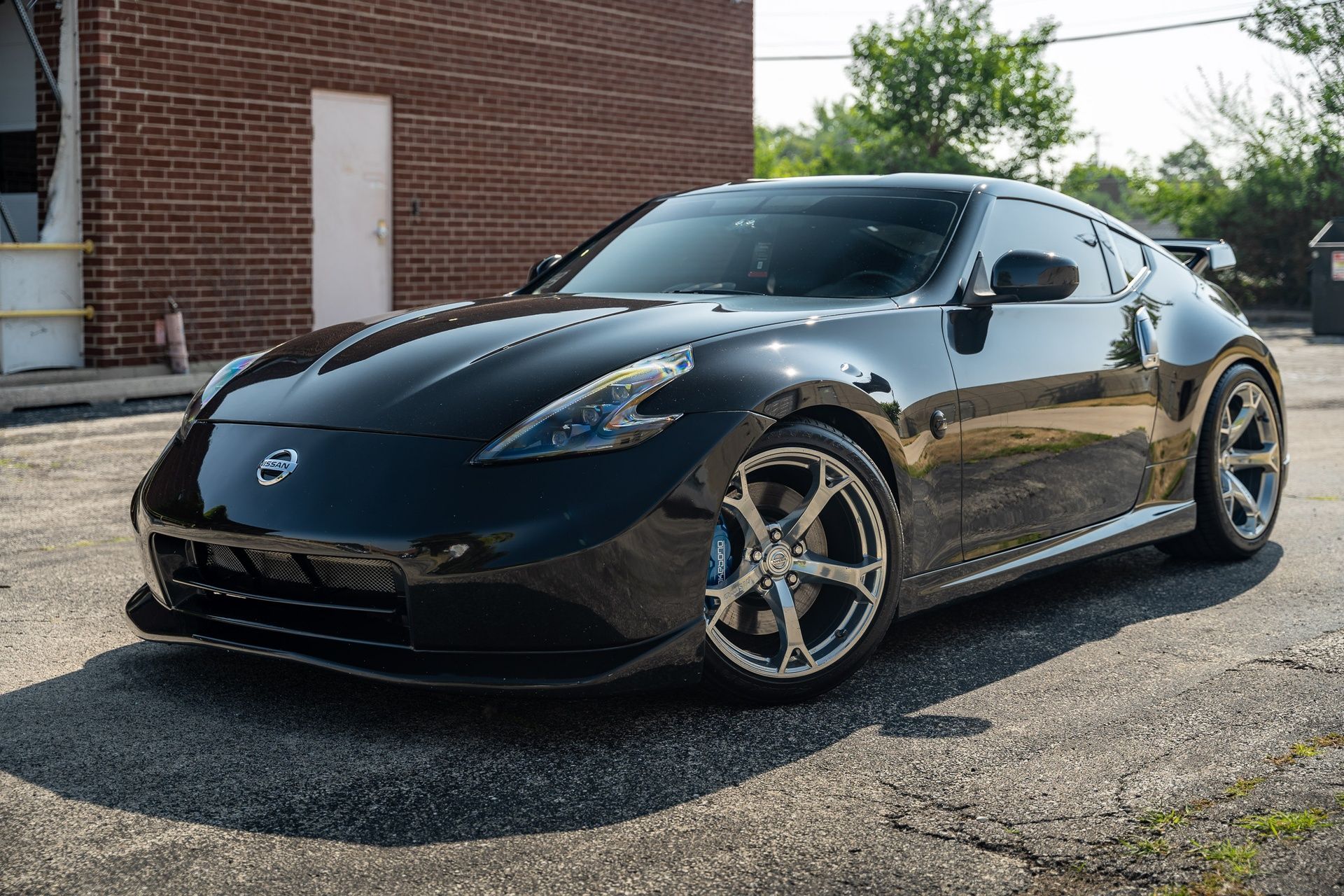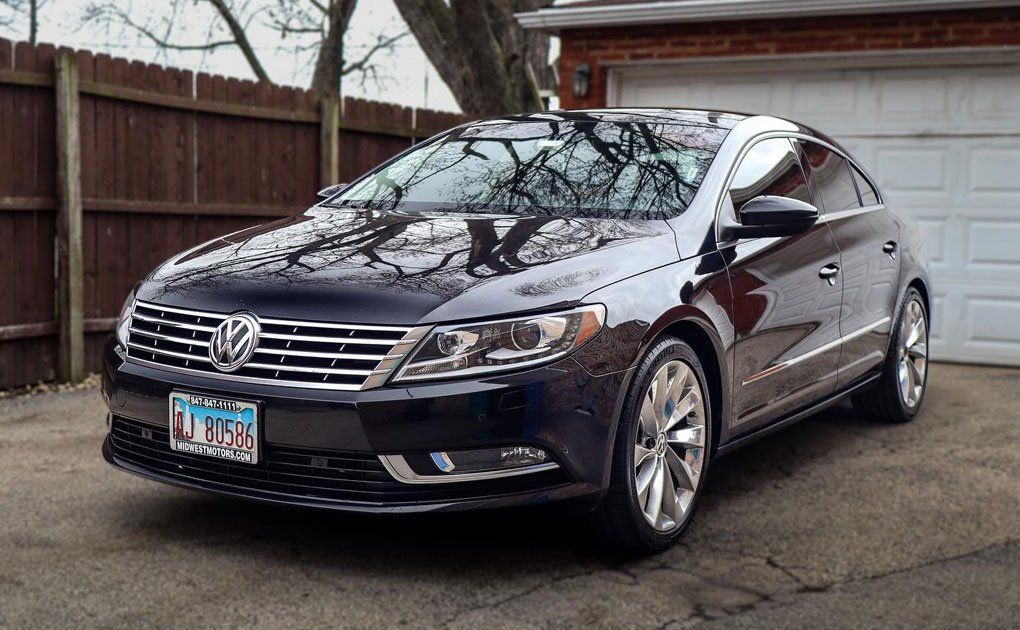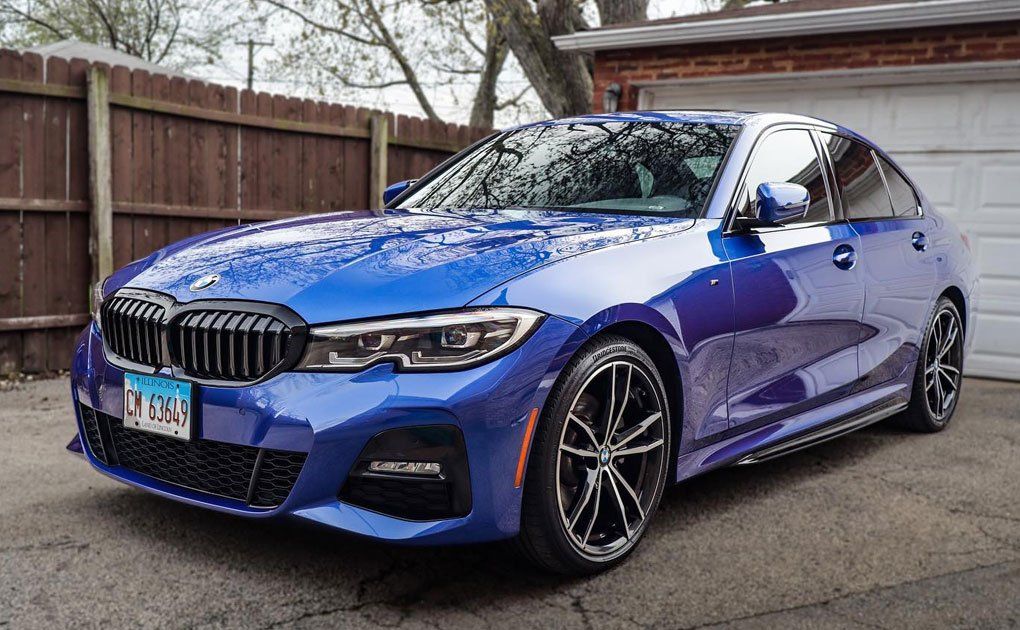PPF Maintenance: How Often You Should Inspect and Maintain for Best Protection
CALL (708) 574-8496
GET A FREE ESTIMATEWhen considering methods to protect your vehicle's paint, waxing and regular washing may come to mind as primary defenses. However, an often overlooked yet highly effective option is paint protection film. Widely praised by car enthusiasts, PPF serves as a robust barrier against scratches, road debris, and the damaging effects of UV rays. To ensure that this protective layer performs optimally, it is essential to conduct regular inspections and maintenance.
It is recommended to inspect your paint protection film every six months to one year, depending on environmental conditions and vehicle usage. Additionally, a thorough inspection should occur after installation to ensure proper application, particularly focusing on corners, edges, bubbles, and adherence to the vehicle's surface.
Frequency of PPF Inspection
The care you give to your paint protection film can significantly influence both its longevity and effectiveness. Just like checking the health of a pet or maintaining a car, a consistent inspection schedule ensures that PPF remains intact and functional. It is essential to inspect your PPF immediately after installation; this initial check is critical for assessing whether it has been applied correctly. Inspect the corners and edges, as they are more prone to lifting or bubbling. Addressing these problems right away can prevent further complications down the road.
Routine Checks
Under normal conditions, it is advisable to conduct visual inspections every six months, particularly in well-lit areas where you can thoroughly assess its condition. Focus on high-stress zones such as the front bumper or the hood, which often bear the brunt of road debris and environmental factors. If you live in regions that experience extreme weather—think scorching heat or heavy snowfall—consider increasing your inspection frequency to every three months. This additional diligence can be key in identifying and addressing minor issues before they escalate into more significant problems.
In fact, about 70% of PPF users report improved longevity when they adhere to this biannual inspection routine, with visibility helping catch approximately 80% of minor issues prior to them turning into major damage. The first year post-installation might be particularly crucial since around 40% of PPF-related damages occur within this timeframe. Therefore, taking note of the adhesive's integrity during these checks protects your investment and enhances its performance over time. Additionally, be particularly vigilant after extreme weather events or long road trips, as the elements can significantly damage PPF. Inspect for signs of wear, such as scratches or bubbling that may have been exacerbated by harsh conditions. Should you find anything amiss, addressing these minor issues promptly will extend the life of your PPF significantly.
Comprehensive Maintenance Checklist
A well-structured maintenance checklist is your roadmap to ensuring that your paint protection film remains in pristine condition. It's similar to giving your vehicle a checkup; it's not just about maintaining appearances but also about ensuring everything operates smoothly over time. One of the first things you should do is start with a visual inspection. By closely examining the film for any discoloration or bubbles, you're often able to catch minor issues before they become major headaches. Look for signs that may indicate wear or damage, especially around edges where the film can lift. Following your visual assessment, integrating a touch test enhances your routine. This means gently swiping your fingers across the surface to feel for any rough areas or loose sections. It's surprising how much can be revealed through simple tactile awareness. If you find anything unusual, address it immediately; neglecting these small imperfections often leads to larger problems down the line.
To ensure your PPF remains effective, regular cleaning is essential. Use pH-neutral car soap and soft microfiber cloths to avoid scratching. Steer clear of harsh chemicals that could deteriorate the film's integrity. Monthly cleanings are a beneficial habit but elevate this frequency during harsher conditions when dirt and grime are more prevalent. Another critical component of this checklist is documentation. Maintaining a log of all inspections, including dates and observed issues, offers helpful data over time on how well the film is holding up and when it's time for professional help. This practice will help you track any recurring issues and assist professionals if you decide to seek their expertise later. Scheduling annual checkups with a specialist is crucial to identify underlying concerns before they escalate. Experts can perform thorough evaluations that include checking adherence in high-stress areas like corners and edges, where temperature variations might affect longevity. Having this comprehensive checklist helps streamline your maintenance efforts and guarantees optimal protection for your vehicle's paint.
Effective Cleaning Techniques
The process of cleaning paint protection film may seem straightforward, but specific techniques can extend the life and effectiveness of the film. Understanding these methods helps you maintain a beautiful appearance while safeguarding against potential damage.
Gentle Cleaning Solutions
To start, the correct cleaning solution is crucial. Using a pH-neutral car soap mixed with lukewarm water is an excellent option, as it won’t harm the film's integrity. Additionally, commercially available sprays specifically designed for PPF work wonders in ensuring that no deterioration occurs during cleaning. It's important to avoid abrasive materials, as even minor scratches can mar the film's protective capabilities. Remember that prevention is key: harsh chemicals or grit can significantly reduce the lifespan of your PPF.
Cleaning Methods
Beyond what you use, how you clean matters just as much. For this reason, a well-structured approach should be adopted. Here’s a step-by-step guide:
- Pre-Rinse: Begin by rinsing your vehicle with clean water to remove any loose dirt or debris. It’s like giving your car a gentle shower before diving into deeper care.
- Two-Bucket Method: Prepare two buckets—one filled with soapy water and another with clear water for rinsing your wash mitt. This method helps prevent dirt from being reintroduced to the surface while you scrub, which is vital for protecting your PPF from scratches.
- Gentle Scrubbing: Use soft microfiber mitts to clean—the texture of microfiber minimizes the risk of scratching compared to traditional sponges. Scrub gently in straight lines rather than circles; this way, you’re less likely to create swirl marks.
- Rinse Thoroughly: After scrubbing, ensure that no soap residue remains on the film, as leftover soap can cause streaks and dullness in appearance.
- Drying: Finally, pat dry with a microfiber towel instead of wiping aggressively. Microfiber towels absorb moisture effectively and significantly reduce the chances of water spots forming.
Following these steps allows you to provide your PPF with the gentle care it deserves while maintaining its brilliant shine and durability.
Identifying and Repairing Damage
Damage to your PPF can indeed reduce its effectiveness, so it’s essential to identify and address issues promptly. Common problems include scratches, peeling edges, and bubbles that form due to weather or wear over time. These seemingly minor issues can escalate if not taken care of, leading to more costly repairs later.
- Detecting Damage: When inspecting your PPF, focus on high-impact areas such as the hood and front bumper, where debris frequently hits the surface. Take a close look for bubbling and tears; these signs can indicate wear that needs attention. Remember, while smaller bubbles may dissipate on their own within a few weeks, larger ones or any visible tears should be addressed immediately to prevent further deterioration. A good practice is to inspect your film every three to six months to catch these issues early on. Once you’ve identified any damage, the next step is determining how to fix it effectively.
- Repair Options: Fortunately, repairing minor damage to PPF can often be done yourself. For instance, small bubbles can sometimes be remedied through gentle heat application. Using a hairdryer on a low setting, gently warm the area until the bubble flattens out—just be careful not to hold the dryer too close, as excessive heat can warp the film. However, keep in mind that more significant damage, such as deeper scratches or extensive bubbling near the edges, will likely require professional help. Services like D’Andrea Auto Detailing specialize in PPF maintenance and can provide reliable repairs and even reapplication if needed. Getting an expert's assistance ensures quality repair and might extend the life of your PPF significantly.
Impact of Environmental Factors
When we think about taking care of our vehicles, we often focus on regular washing, perhaps a wax or polish here and there. However, many car owners overlook how environmental factors can silently degrade the protective capabilities of their Paint Protection Film (PPF). Over time, exposure to elements like sunlight, UV radiation, and harsh weather conditions can drastically affect both the appearance and integrity of PPF.
- Sunlight and UV Radiation: Prolonged exposure to strong UV rays can accelerate discoloration and cause the film to become brittle or less effective at protecting your vehicle's paint. Research shows that PPF can lose 10–20% of its protective capabilities after just two years of constant sun exposure. To combat this gradual degradation, it’s wise to be proactive. Consider investing in UV protectant sprays specifically designed for PPF or simply make it a habit to park in shaded areas whenever possible. Think of your car like your skin; just as you'd apply sunscreen before heading out for the day, giving your PPF a layer of protection against the sun will help maintain its vitality long-term.
- Weather Conditions: Snow and road salt are not just winter nuisances; they can be quite harmful to your PPF if left unchecked. These elements comprise corrosive materials that may chip away at the protective surface layer over time. Acid rain poses another risk—it can leave unsightly spots that compromise the film’s effectiveness. After exposure to such weather conditions, it is crucial to wash your vehicle promptly using proper cleaning techniques. Using soft cloths and pH-neutral soap will help ensure you don’t introduce further deterioration while you’re attempting to clean your car.
Tools and Products for Longevity
The right tools and products are indeed the backbone of effective PPF maintenance. Microfiber towels are a must-have when cleaning your PPF. Why? These towels prevent scratches while drying, ensuring you don’t inadvertently mar that pristine finish you've worked so hard to maintain. Imagine using coarse cloths that could leave behind marks; a microfiber towel offers a soft touch that’s incredibly gentle on the surface. Alongside microfiber towels, pH-neutral cleaners should be your go-to for regular washes. These specially formulated cleaners are safe for PPF, preventing deterioration or damage over time. Think of it like using the right shampoo for your hair—using products that respect the delicate balance of your PPF will ensure it doesn’t break down prematurely due to harsh chemicals.
However, how can we protect the PPF from environmental elements? This is where UV protectant sprays come into play. They act as a shield against harmful UV rays that can cause discoloration and degradation in your film. It’s similar to how sunscreen protects your skin from damaging sun exposure; applying a UV protectant acts as an invisible barrier that preserves your car's sleek look. Regular application of this spray ensures you’re ahead of the game against the sun’s relentless effects. Another often-overlooked tool is the clay bar, which effectively removes deep-seated contaminants that regular washing might miss. When contaminants accumulate on the surface, they can compromise not just aesthetics but also the integrity of your PPF. Using a clay bar provides a gentle yet thorough means of decontaminating the surface, much like exfoliating dead skin cells; it reveals that shiny layer underneath and keeps your PPF looking fresh.
Now that we've stripped away contaminants, let’s talk about protective layers. This brings us to sealants, which offer an additional layer of protection over your PPF. Think of sealants as a safeguard against scratches and environmental factors that would otherwise wear down the film faster than expected. Applying a high-quality sealant adds that extra touch of durability, extending the lifespan and enhancing the appearance of your PPF. It's like giving your car a raincoat before it steps outside! You wouldn’t send it out in bad weather without proper gear, would you? With all these tools at your disposal—microfiber towels, pH-neutral cleaners, UV protectant sprays, clay bars, and sealants—you can create a routine that maintains appearance and preserves the value of your vehicle long-term. By incorporating these products into your maintenance repertoire, you're setting yourself up for success in protecting that essential investment from everyday wear and tear. Incorporating these practices into your routine will position you well for keeping your PPF in top-notch condition. Regular inspections and maintenance translate directly to long-lasting protection.
D’Andrea Auto Detailing’s Expert PPF Services
Protect your vehicle with D’Andrea Auto Detailing’s
premier paint protection film services in Carol Stream, IL. Our expert team provides top-tier installation to keep your car’s paint safe from scratches, road debris, and harmful UV rays. Whether you drive a high-performance vehicle or simply want to maintain your car’s sleek appearance, we offer custom solutions tailored to your needs. Don’t wait until the damage is done—contact us today to schedule your PPF service and keep your vehicle looking pristine for years to come!





